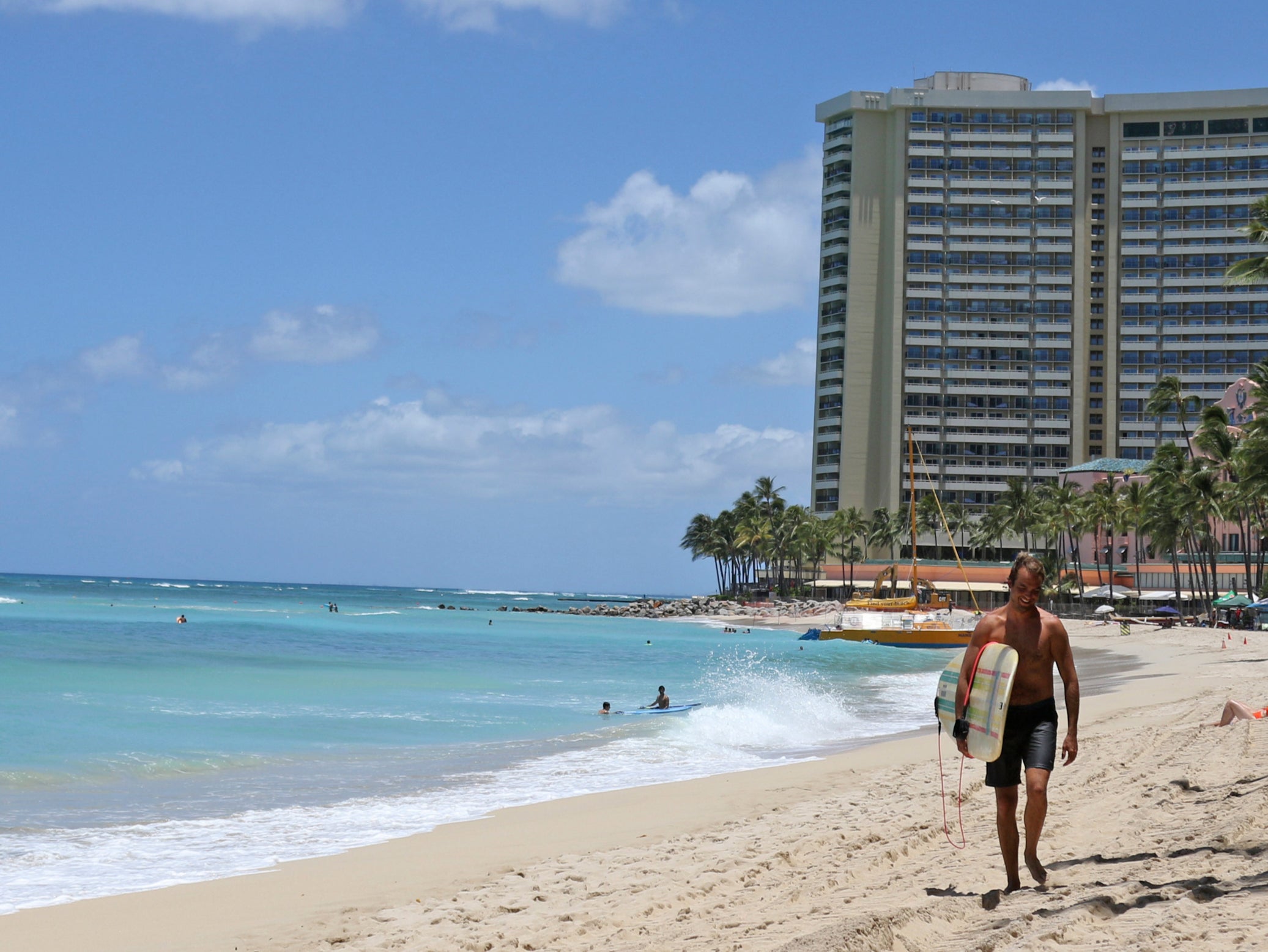
Rising sea levels could claim 40 per cent of beaches on Hawaii’s most visited island by 2050, according a new study.
Researchers from the University of Hawaii’s Mānoa School of Ocean and Earth Science and Technology (SOEST) found that in 30 years, more than a third of beaches in O’ahu could be lost.
O’ahu, home to the capital Honolulu, is the most popular Hawaiian island with tourists. Many of O’ahu’s industries and activities centre around its beaches - from the luxury Wakiki resort to the North Shore which hosts the annual championships, the Triple Crown of Surfing.
Hawaii’s tourism revenue was $17.75billion in 2019, according to the state tourism board, and more than 10 million people visited the islands.
The study also examined beach hardening, which involves constructing seawalls, sloping rock revetments or jetties to artificially protect beaches.
A previous study by the researchers noted that sea walls can actually make erosion worse and forecast that without a change in policies, some 25 miles of O’ahu’s beaches could vanish, Hawaii News Now reported.
The paper, published in the journal Nature, noted that global sea-level rise is likely to rise between an estimated 6-15inches (0.15–0.38 meters) in the next 30 years.
It notes that "reactive and piecemeal approach to beach management has failed" and that beach parks, federal lands and residential properties are all in “critical need of new management options focused on beach conservation”.
The researchers called for a “collaborative partnerships” to conserve beaches for future generations.







